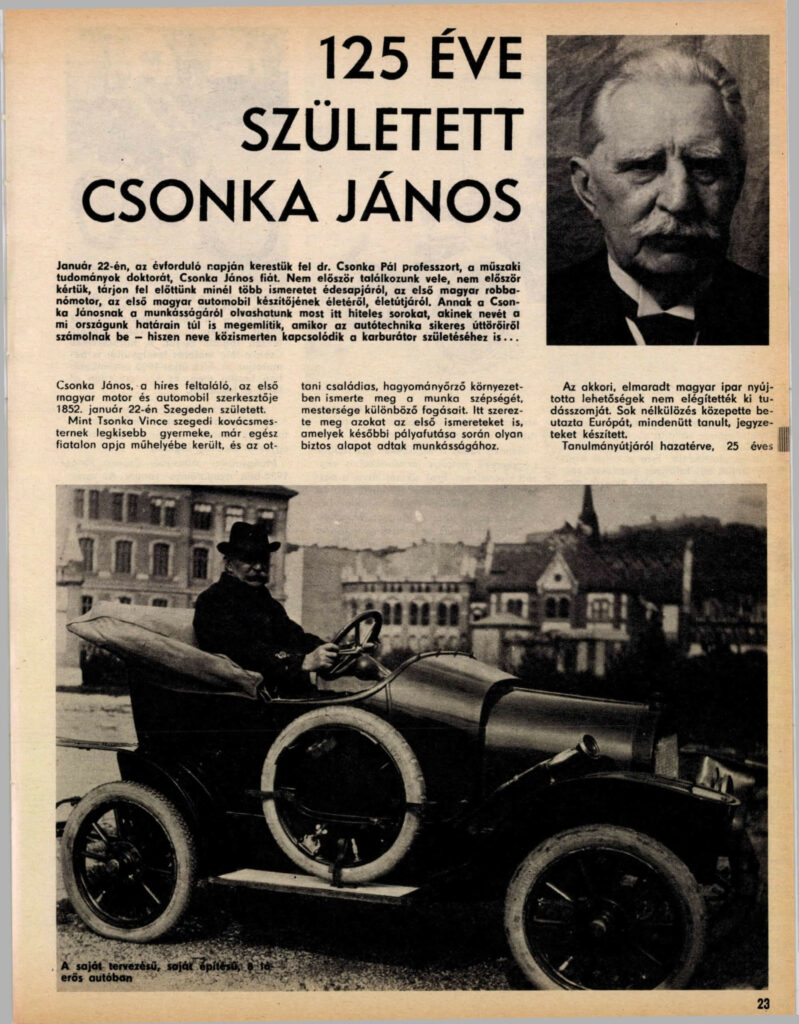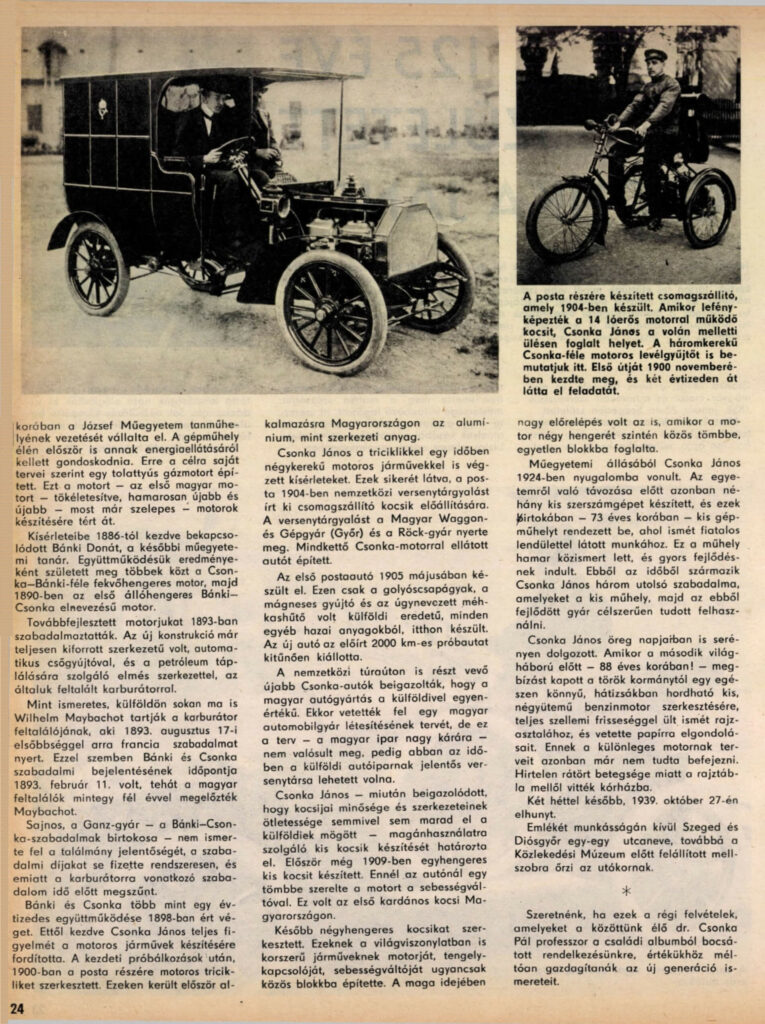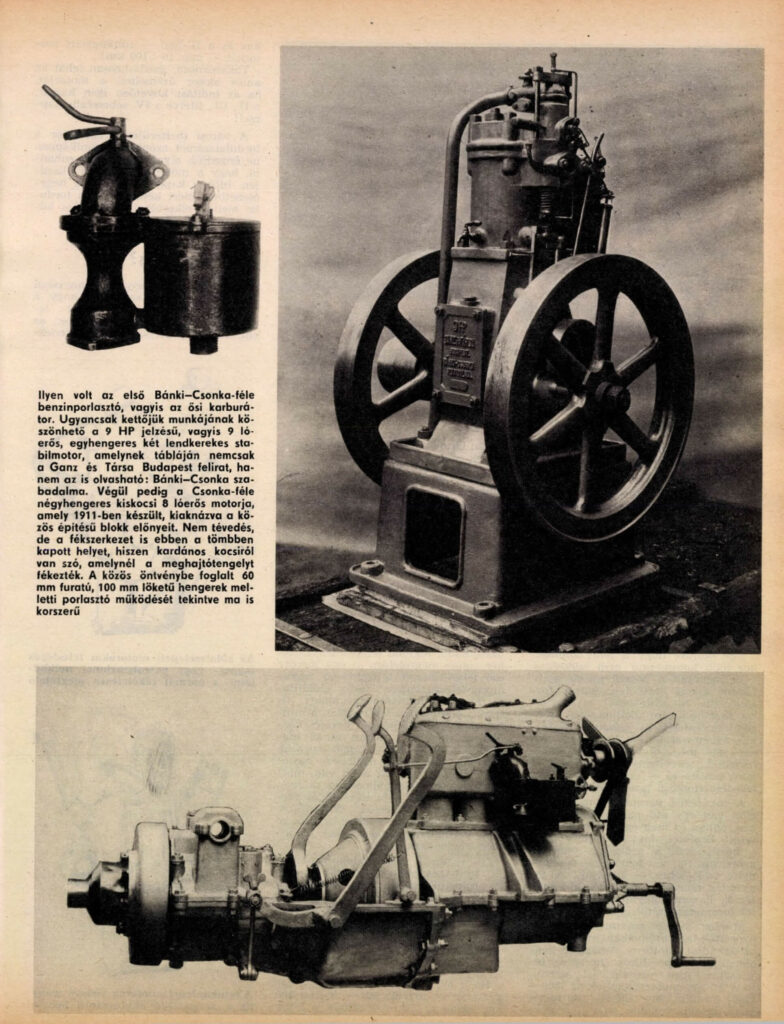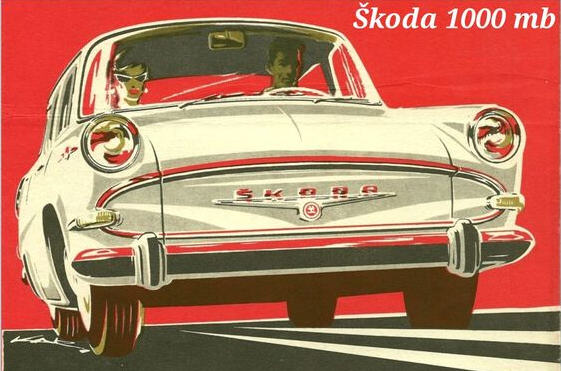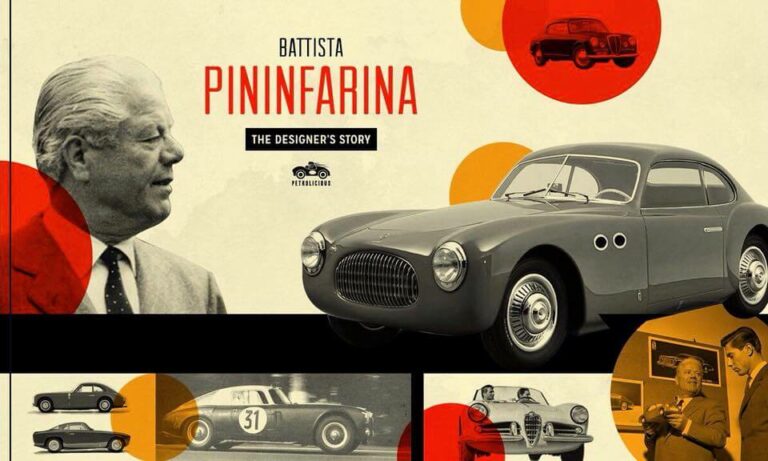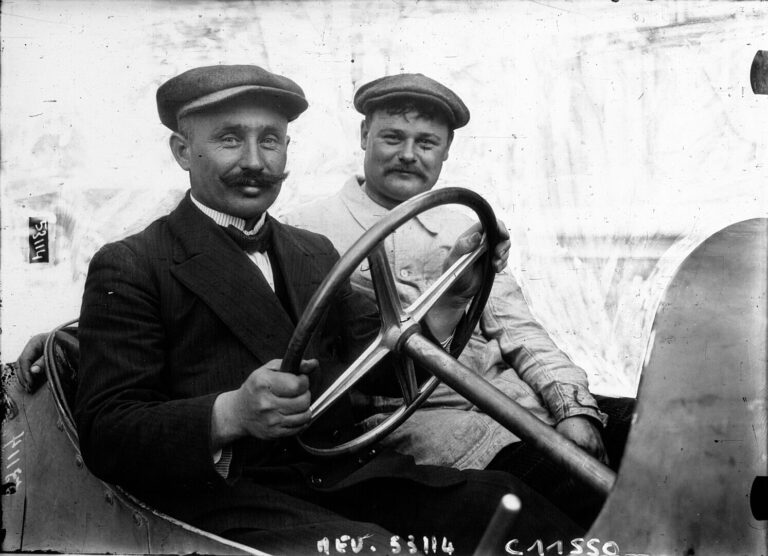1977 - (125) János Csonka was born 172 years ago
From Car Engine 1977 Februarypublished the commemoration quoted below János Csonkathe pioneer of the Hungarian automotive industry and the Hungarian mechanical engineering industry. Unfortunately, the author of the article did not sign his paper, but his work had never been seen before, Dr. Pál Csonka- the son of János Csonka - illustrated with pictures.
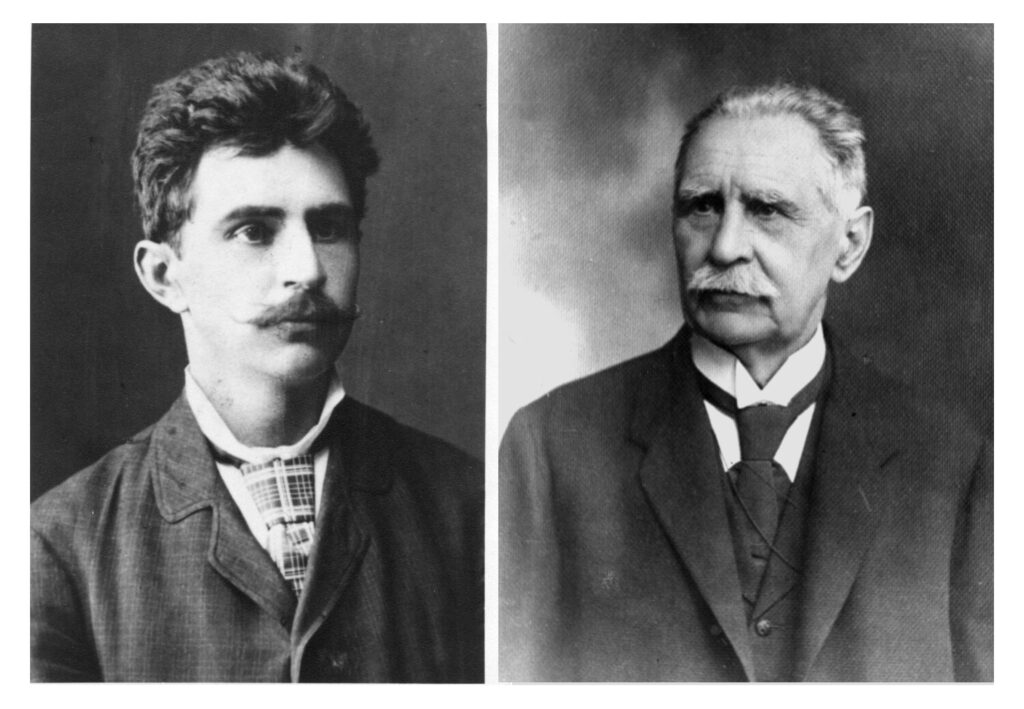
The young and the old János Csonka - Image source: wiki / Pilgab
János Csonka was born on 22 January 1852 in Szeged, his father was Vince Csonka, his mother Ilona Dobó. He finished his schooling in his hometown, then became a skilled worker in his father's forge. He worked in the main workshop of the Alföldi-Fiumei Railway in Szeged (1871-1873), in the heating house of the MÁV in Budapest (1873-1874), then in Vienna, Zurich, Paris and London. He continued his education and was appointed head of the workshop of the Royal Joseph University of Technology, a post he held until his retirement (1877-1925).
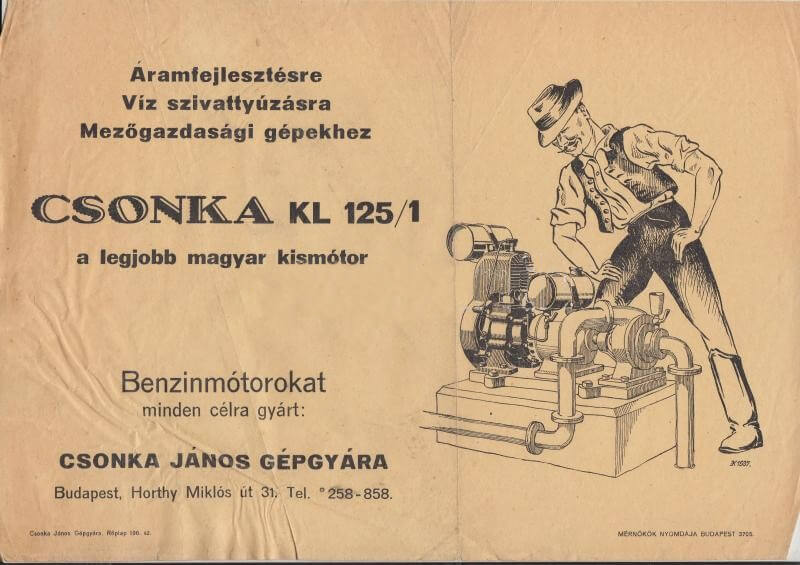
Image source: darabanth.com
In 1887, András Mechwart, together with Donat Bánki, asked András Mechwart to make the engines owned by Ganz operational, thus beginning a decade of collaboration that enriched engine production with many inventions, including the carburettor. Around the turn of the century, they both took up new positions at the University of Technology, and separated as inventors, but their friendship and collaboration never ended.
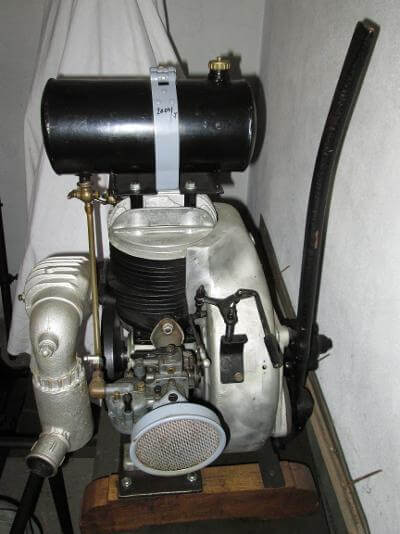
János Csonka's rod engine - Image source: mandadb / Mezőkövesdi Közkincs-Tár Nonprofit Kft.
János Csonka has also made an invaluable contribution to the continuous modernisation of the practical part of Hungarian technical higher education. His friends and fellow inventors included world-renowned professors from the University of Technology, and among his friends from abroad was Robert Bosch. He designed and built paper and tissue machines, numerous instruments and measuring devices, which were used beyond our borders.
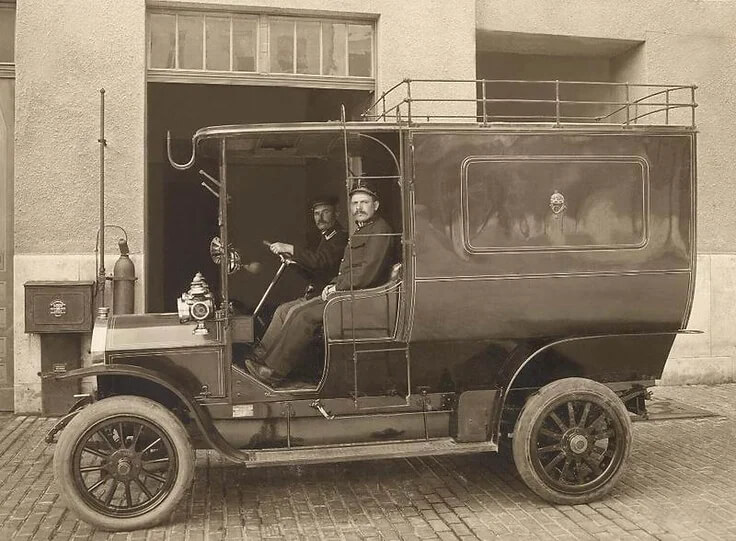
Csonka 16 horsepower postal parcel truck - Image source: postamuzeum.hu
Besides engine building, his favourite field was automotive design. He designed a motor tricycle for the Hungarian Royal Post Office, and later a motor tricycle for a parcel delivery vehicle, which was successfully tested as a postal car on 31 May 1905. From here we can count the beginning of Hungarian car production. In total, some 150 cars are directly related to him. He did not have the financial means for large-scale series production, although he cooperated with several companies to organise car production. In 1912 he sold the designs of his small car to the Hungarian General Engineering Works and stopped his car design activities.
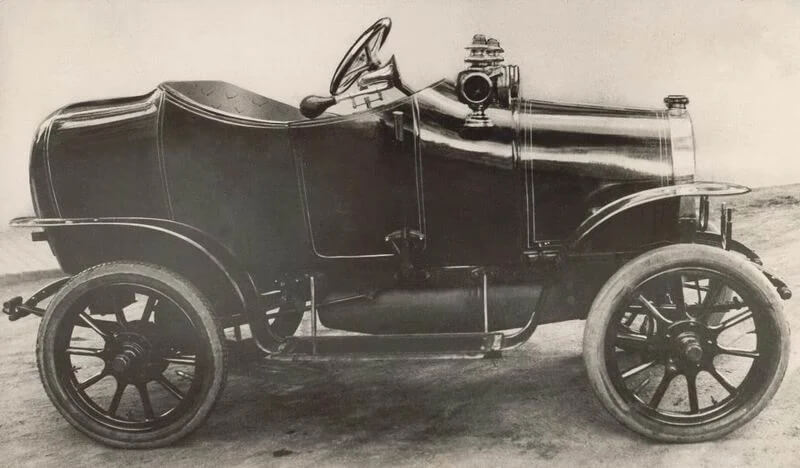
Csonka's 8-horsepower letter collector - Image source: postamuzeum.hu
Immediately after the outbreak of the First World War, in August 1914, the Hungarian military command ordered the conscription of vehicles. Although the Hungarian General Engineering Works was ready to mass-produce cars like Csonka's, the army would have needed considerably more vehicles than were actually available. The production of vehicle engines came to the fore and the factories as a whole became suppliers to the army. This also sealed the fate of series production of cars like the Csonka.
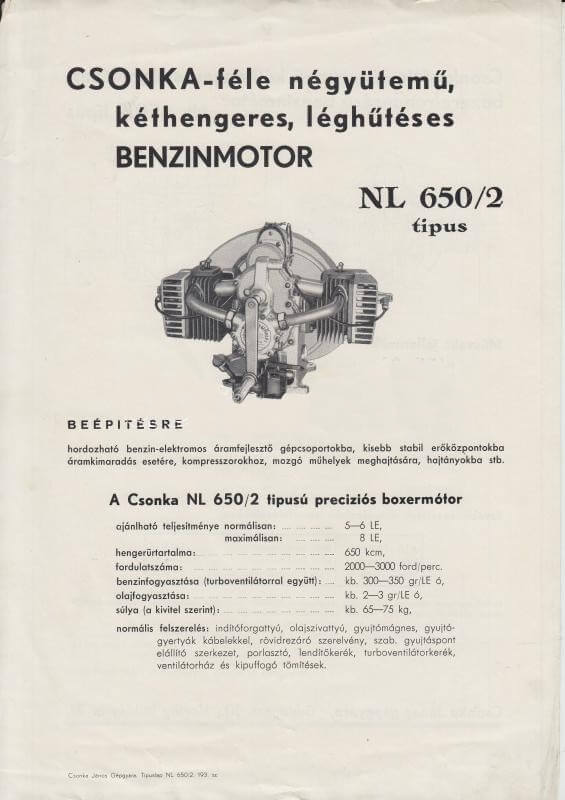
Image source: darabanth.com
János Csonka designed and built the first Hungarian supercharged engine, fire engine, boat engine, mining engine, railcar engine and bus. He was also the first to use aluminium, the controlled intake valve and high-voltage magneto ignition in engine production.
The result of his technical literary activities: the first Hungarian automobile dictionary. János Csonka did not have a degree. His merits were acknowledged with gratitude by both the Technical University and the Hungarian engineering community, and before his retirement in 1924, the Chamber of Engineers entitled him to use the title of mechanical engineer.
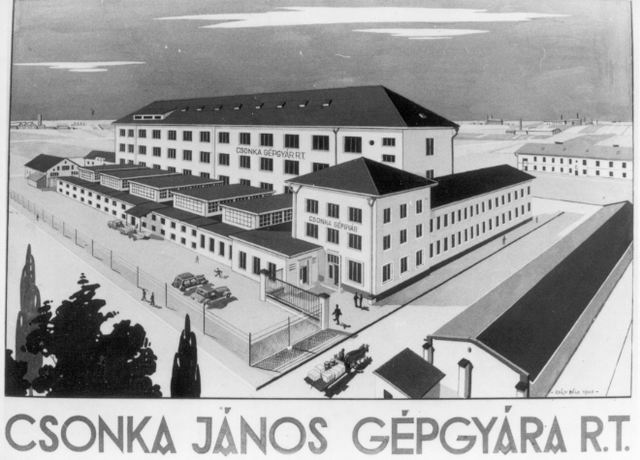
Image source: János Csonka Museum
After his retirement, at the age of 73 (!), he opened a car repair workshop on Fehérvári út in Budapest, which later developed into the Csonka Machine Factory (Csonka János Gépgyár Rt.), later Kismotor- und Gépgyár. He worked here until his death in 1939.
Below you can read the full text of the article about János Csonka published in Autó-Motor in February 1977, and in the gallery at the end of the post you can find high-resolution images of the article.
♠
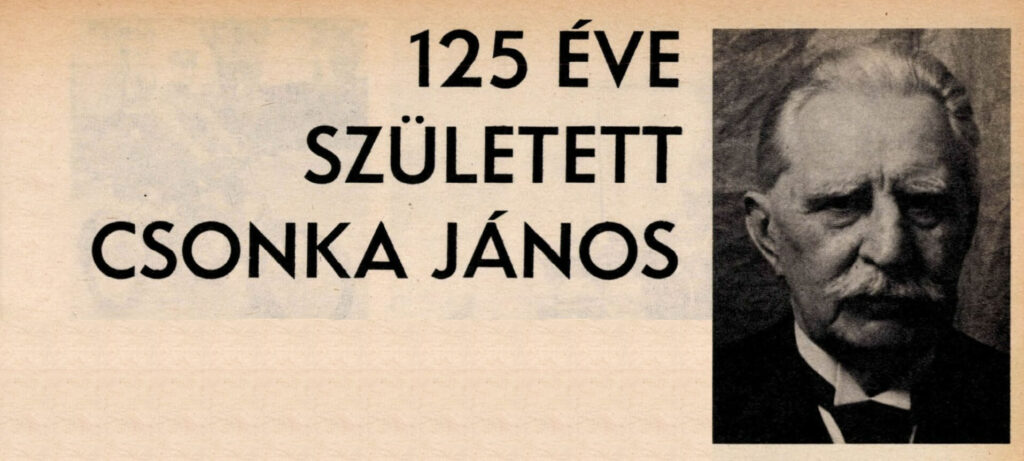
On 22 January, the day of the anniversary, we visited Professor Dr. Pál Csonka, Doctor of Engineering, son of János Csonka. It was not the first time we had met him, not the first time we had asked him to tell us as much as possible about his father, about the life and career of the creator of the first Hungarian explosion engine and the first Hungarian automobile. We are reading here authentic lines about the work of János Csonka, whose name is mentioned beyond the borders of our country when reporting on successful pioneers of automotive technology - since his name is also well-known to be connected with the birth of the carburettor. . .
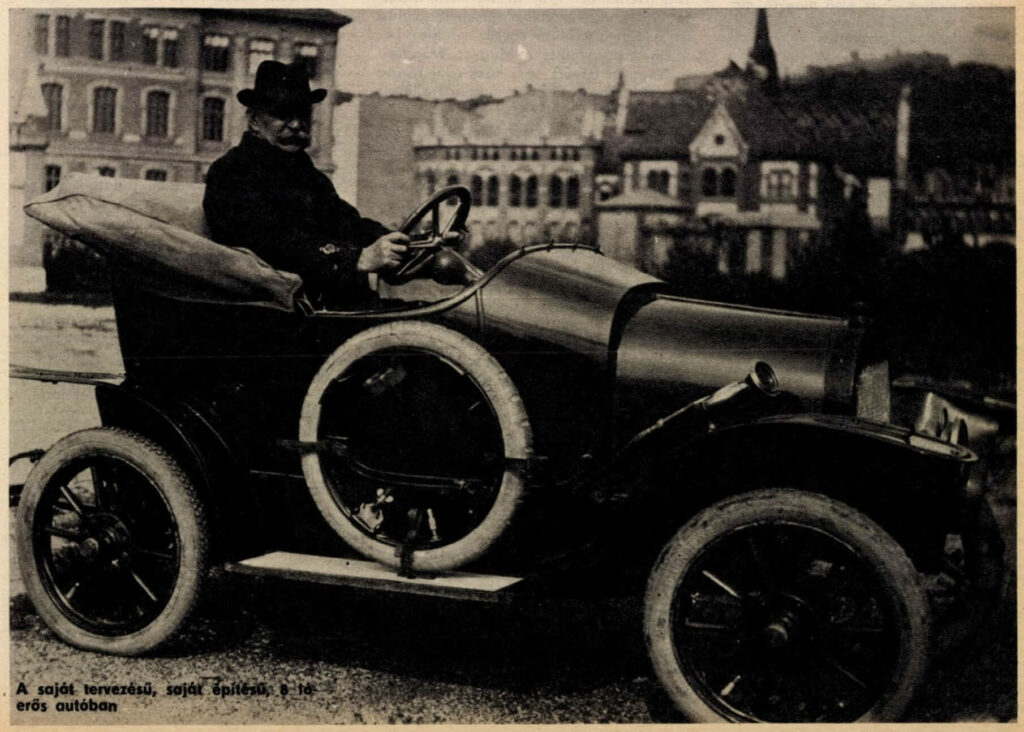
János Csonka, the famous inventor and builder of the first Hungarian engine and automobile, was born in Szeged on 22 January 1852.
As the youngest child of Vince Tsonka, a master blacksmith from Szeged, he was taken to his father's workshop at a very young age, and in the family-like, traditional environment he learned the beauty of the work and the various tricks of the trade. It was here that he acquired the first skills that would later form the basis of his career. The opportunities offered by the then backward Hungarian industry did not satisfy his thirst for knowledge. In the midst of many hardships, he travelled around Europe, studying and taking notes.
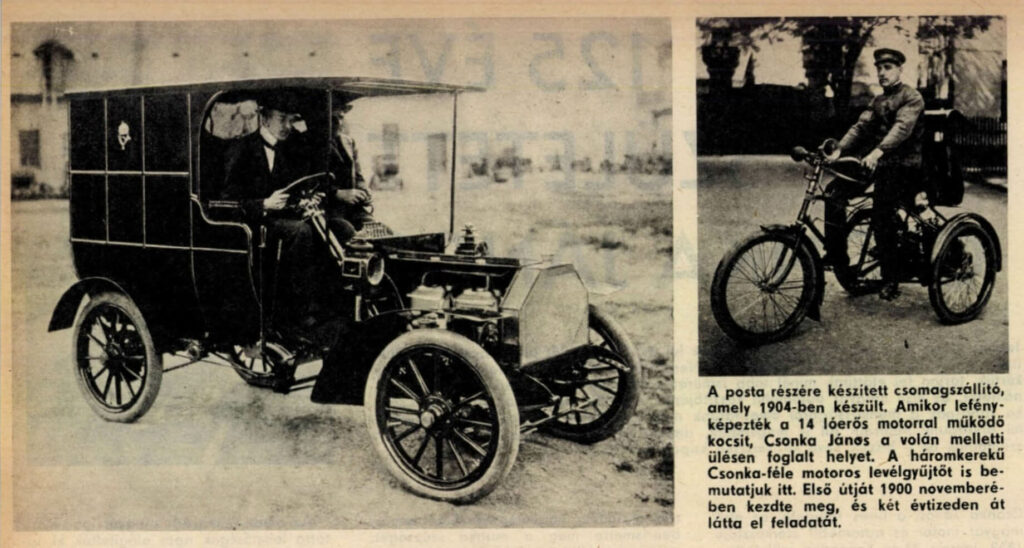
On his return home from his study trip, at the age of 25, he took over the management of the workshop at the Joseph University of Technology. As head of the workshop, his first task was to ensure its energy supply. For this purpose he built a piston gas engine of his own design. After perfecting this engine - the first Hungarian engine - he soon moved on to making newer and newer engines, now with valves.
Donát Bánki, later professor at the University of Art, joined his experiments from 1886. Their collaboration resulted in the Csonka-Bánki engine, a horizontal cylinder engine, and in 1890 the first stationary cylinder engine, the Bánki-Csonka engine.
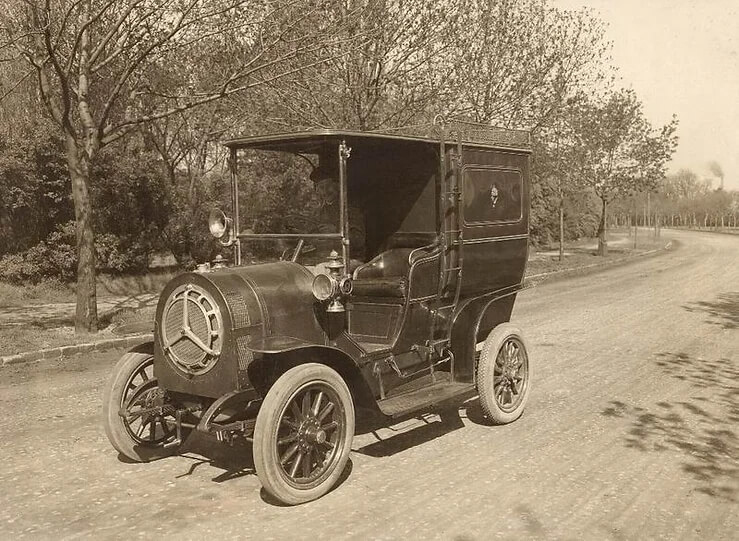
Csonka's 16 horsepower mail delivery vehicle - image source: postamuzeum.hu
Their improved engine was patented in 1893. The new design had a fully developed structure, with an automatic pipe ignition and a clever device for feeding the kerosene, the carburettor, which they invented.
As is well known, Wilhelm Maybach is still considered by many abroad to be the inventor of the carburettor, having been granted a French patent for it on 17 August 1893. By contrast, the patent application of Bánki and Csonka was filed on 11 February 1893, so the Hungarian inventors were about half a year ahead of Maybach.
Unfortunately, the Ganz factory - the holder of the Bánki-Csonka patents - did not recognise the importance of the invention, did not pay the patent fees regularly, and as a result the carburettor patent was prematurely cancelled.
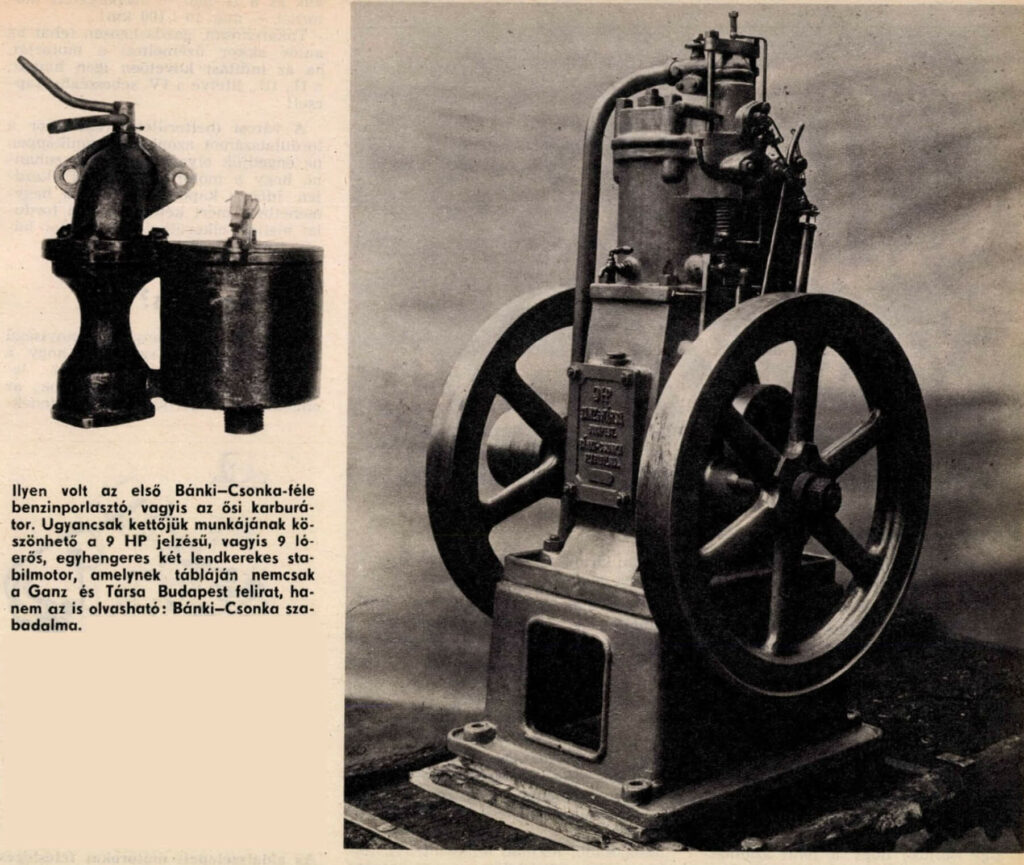
Bánki and Csonka's collaboration of more than a decade ended in 1898. From that time on, János Csonka turned his full attention to making motor vehicles. After initial attempts, he built motor tricycles for the post office in 1900. Aluminium was used as a structural material for the first time in Hungary.
János Csonka also carried out experiments with four-wheeled motorised vehicles at the same time as tricycles. Seeing the success of these experiments, in 1904 the Post Office put out an international tender for the production of parcel trolleys. The tender was won by the Hungarian Waggon and Machine Works (Győr) and the Röck works. Both built cars with Csonka engines.
The first mail coach was completed in May 1905. Only the ball bearings, the magnetic ignition and the so-called bee-cooler were foreign, everything else was made at home from domestic materials. The new car passed the required 2000 km test drive with flying colours.
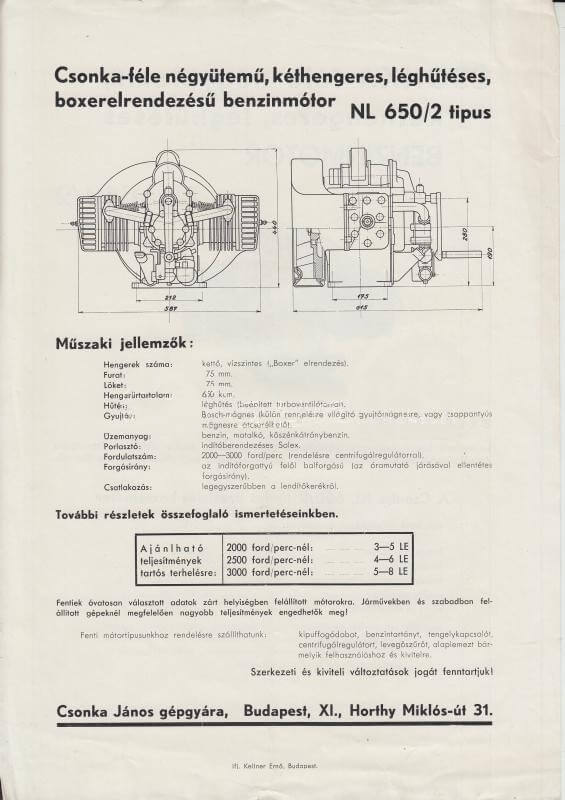
Image source: darabanth.com
The newer Csonka cars, which also took part in the international tour, proved that Hungarian car manufacturing is on a par with foreign ones. At that time, the plan to set up a Hungarian car factory was mooted, but this plan was not realised, to the great detriment of Hungarian industry, even though at the time it could have been a major competitor to the foreign car industry. János Csonka decided to produce small cars for private use, after it had been proved that the quality of his cars and the ingenuity of their construction were in no way inferior to those of foreign manufacturers. His first small carriage was a single-cylinder carriage in 1909. In this car he mounted the engine and gearbox in a block. It was the first cardan carriage in Hungary.
Later he built four-cylinder cars. The engine, clutch and gearbox of these vehicles, which were also state-of-the-art by world standards, were also built in a common block. In his day, it was also a great step forward when he also combined the four cylinders of the engine in a single block.
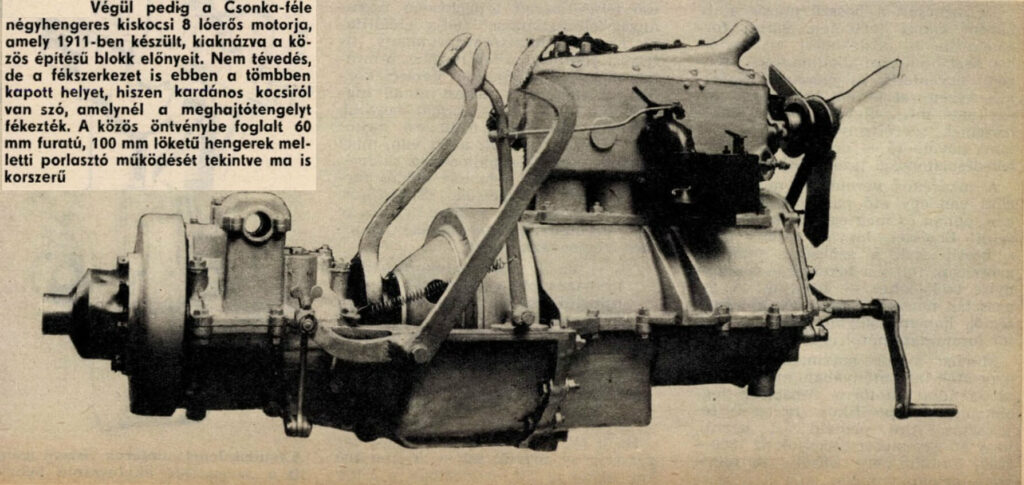
János Csonka retired from his position at the University of Technology in 1924. Before leaving the university, however, he made a few small machine tools, and with these in his possession - at the age of 73 - he set up a small machine shop, where he set to work again with youthful vigour. This workshop soon became well-known and developed rapidly. It was during this period that János Csonka's last three patents were granted, which were put to good use by the small workshop and the factory that developed from it.
János Csonka worked hard even in his old age. When, just before the Second World War - at the age of 88 - he was commissioned by the Turkish government to build a small, lightweight, backpack-portable four-stroke petrol engine, he sat down again with a fresh mind to put his ideas on paper. However, he was unable to complete his plans for this particular engine. Suddenly, he was taken from the drawing board to hospital because of an illness.
He died two weeks later, on 27 October 1939.
In addition to his work, a street name in Szeged and Diósgyőr and a bust in front of the Museum of Transport are also commemorative of his work.
We would like these old recordings, which Professor Dr. Pál Csonka, who lives among us, made available to us from the family album, to enrich the knowledge of the new generation.
